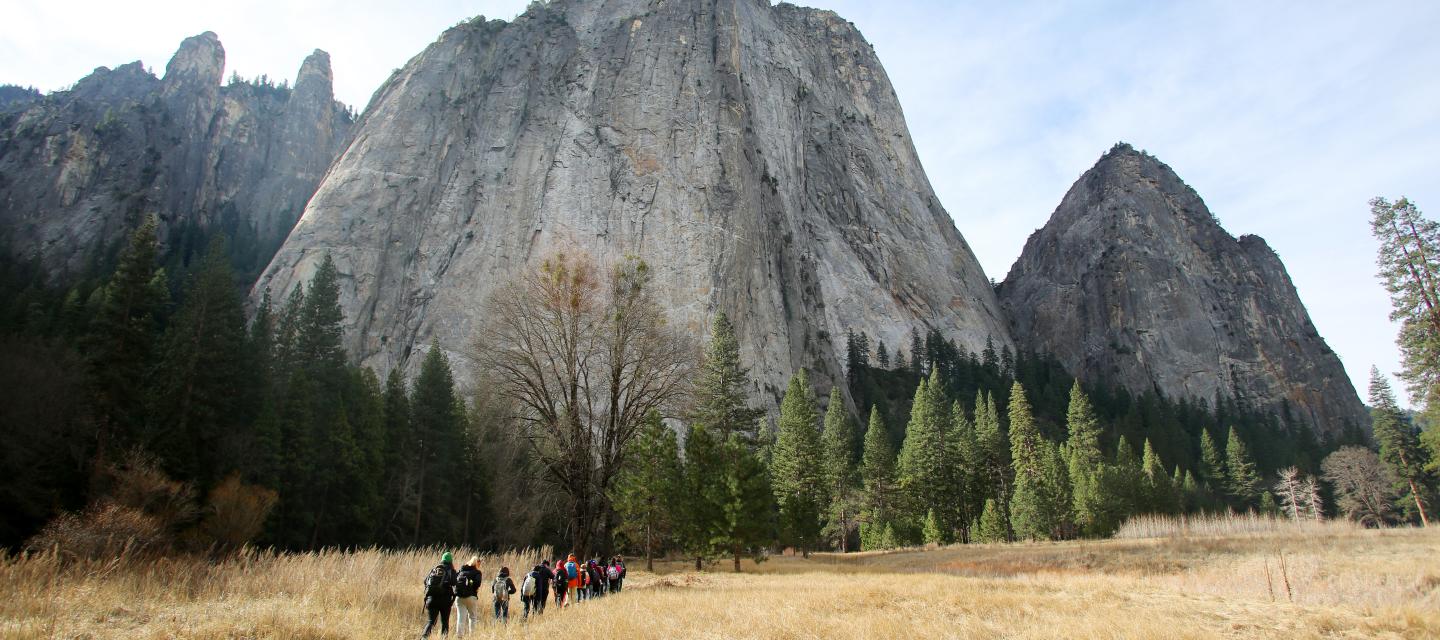NatureBridge's environmental science educators lead interactive online sessions designed to introduce the elevation life-zones and ecosystems of Yosemite National Park with a focus on its landscapes, organisms and the history of the people who have called Yosemite home for thousands of years.
Program Format #
Two educators lead each 40 to 60-minute session using a video conference platform such as Zoom. Attending teachers participate as chaperones who observe and assist students as needed. Interactive technology tools may include Google Earth, Jamboards, breakout sessions and participant polls.
Session 1: Community Building 40 to 60-minute live session
Students will meet NatureBridge educators and work as a group to establish community norms and guidelines. Students will engage in team-building activities that help to create a fun and safe learning space to share and interact for future lessons. Students will learn introductory information about Yosemite such as geography, ecosystems, human history and will participate in a land acknowledgment of the traditional tribes of Yosemite as well as the students' home communities.
Session 2: Intro to Yosemite, Peaks To Canyons 40 to 60-minute live session
Students are introduced to the life zones of Yosemite National Park while exploring the adaptations organisms need to survive and thrive in these ecosystems. Students are taken on a virtual tour through Yosemite’s life zones starting at the highest peak and gradually losing elevation to the subalpine, montane and eventually foothill oak woodland. Students will get to explore life zones on their own and explore what unique environments they are for wildlife.
Session 3: Life Zones Adaptation Auction 40 to 60-minute live session
Students explore the elevation life zones across the 11,000 ft elevation range of Yosemite National Park that creates diverse habitats and enables a wide diversity of life to thrive. Student feedback determines a life zone for the group to call home. Based on the environmental conditions of their chosen life zone, students work in small groups to "build" an organism by using adaptations that can help their organism gather food, water and shelter. Students will share their design and discuss the importance of each organism in their environment.
Outcomes #
Students will be able to:
- Build confidence sharing ideas and working with others in a virtual classroom.
- Develop an understanding of the geographic features responsible for the unique ecosystems and organisms found in Yosemite's elevation life zones.
- Describe the historical and current relationships of local tribes with Yosemite's landscapes and other groups of people.
- Make connections between ecosystems in their home communities and those found in Yosemite.
- Understand how different adaptations allow organisms to survive in Yosemite's life zones.
- Design an organism with unique adaptations to support its survival in one of Yosemite's life zones.
Standards Alignment #
Disciplinary Core Ideas: LS4- Biological & Evolution: Unity and Diversity
Science Practices: Developing and Using Models
Crosscutting Concepts: Cause and Effect; Patterns, Systems and System Models, Stability and Change, Energy and Matter
Materials Needed #
Access to a computer, tablet or other online learning compatible device. Paper and drawing/coloring supplies.
Adult Expectations #
At least one teacher will be present throughout each live online session. Other adults may attend by invitation from the teacher or group coordinator. All attending adults must complete NatureBridge’s Participant Registration Form in advance of the session.
It is the responsibility of attending adults to support student learning and safety during large group instruction and small breakout sessions by following these expectations:
- Support students in staying on task.
- Address discipline concerns while allowing students to be engaged and answer questions on their own.
- Demonstrate a positive attitude and model inclusive behavior.
- Communicate with the group’s NatureBridge educator about the educational plan and offer constructive feedback when appropriate.
Schedule this Program #
